This Obscure Bangkok Market is Home to a Million-Dollar Collection of Tropical Fish
In the market for rare aquarium fish? Head to Thailand.
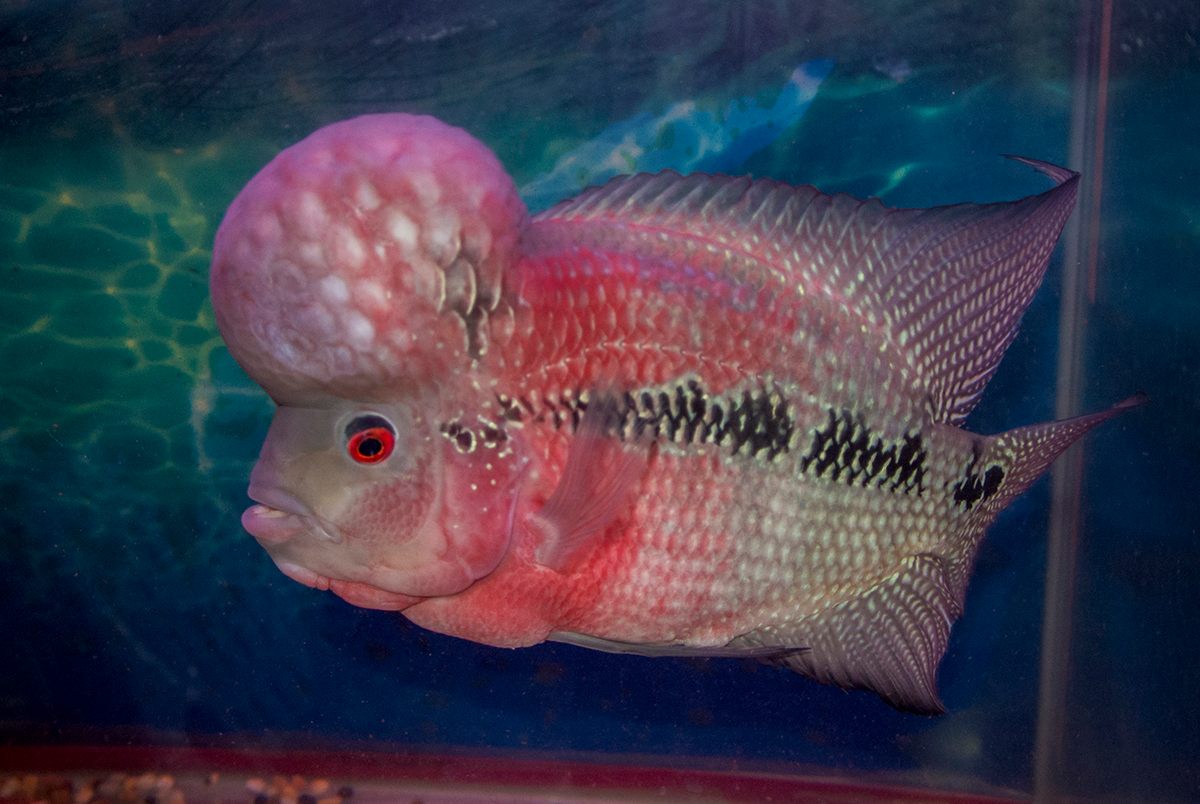
Thailand’s labyrinthine Chatuchak Weekend Market, which spans 27 acres in downtown Bangkok, is one of the largest open-air markets in the world. The maze-like array of stalls and shops is an immersive and often overwhelming experience, especially during the weekend when the market is packed with local shoppers, tourists, and food carts in the ever-present tropical heat. But this extensive warren of shops hides an intriguing secret behind its rows of kitschy souvenirs and knock-off designer bags.
Tucked away just outside the main cluster of the weekend market is a section few Western tourists ever see: Chatuchak’s vast tropical fish and exotic pet market, home to one of the most impressive (and expensive) collections of live aquarium fish anywhere in the world. Disconnected from the main market, and far from the common points of entry for tourists, the fish market hides in plain sight across from a shopping center; even with directions, it can be difficult to locate.
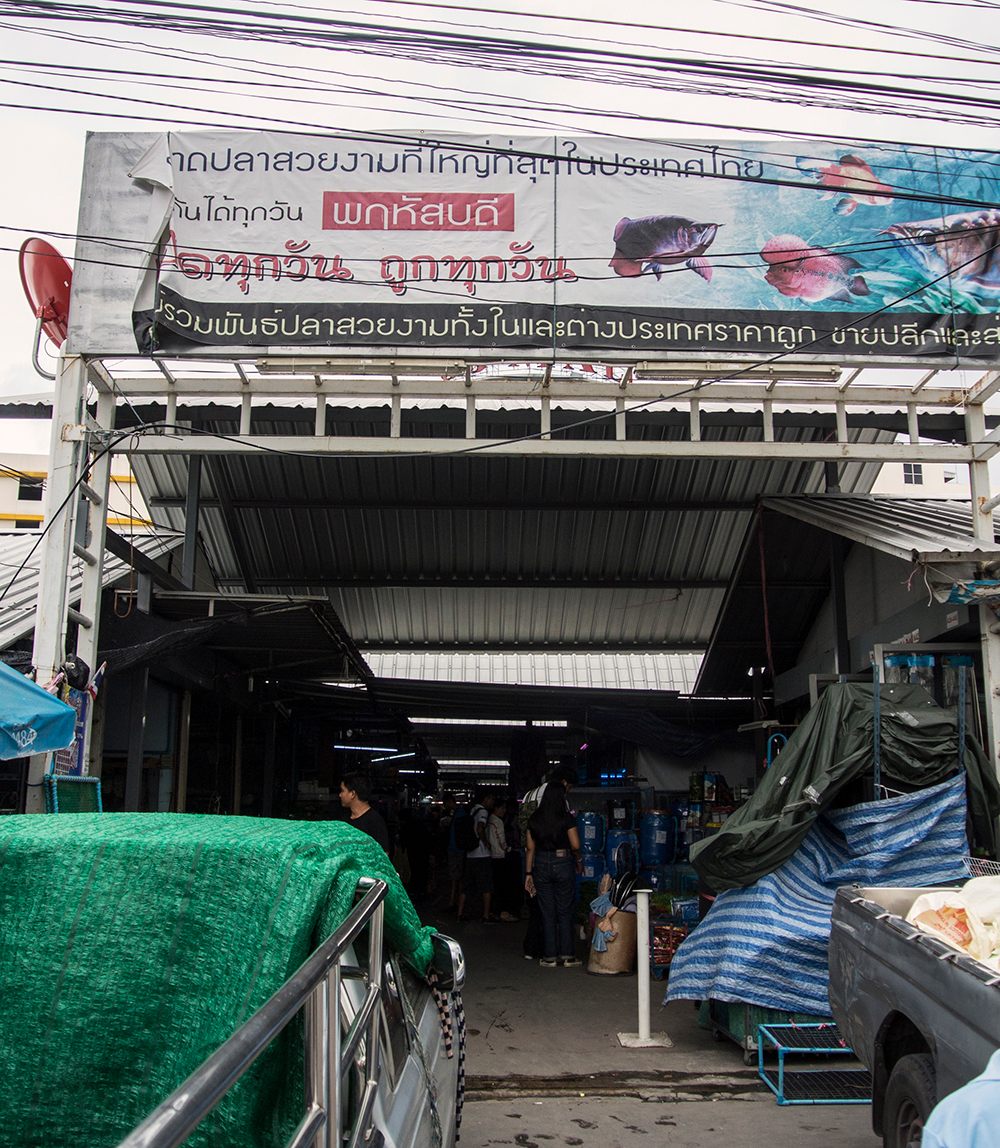
After a short walk, a few outdoor stalls selling enormous koi, some at prices of several thousand U.S. dollars, indicate the market is nearby. These koi shops proudly exhibit trophies and plaques by their entrances indicating champion koi they have raised—much like with purebred dogs, koi are bred for certain characteristics and koi competitions offer prizes in the tens of thousands of dollars.
Passing through the nondescript entrance, the covered market is cavernous, comprised of long stretches of walkways flanked by stalls on both sides, many literally spilling over into the walkways with brightly lit aquariums. Thai culture has a longstanding love affair with pet fish, which were raised and domesticated as pets in the country long before the modern era. The fish, which they pulled from rice field puddles to compete in elaborate “fights” as early as the 13th century, are now known the world over as “Siamese fighting fish” or simply “Bettas.”
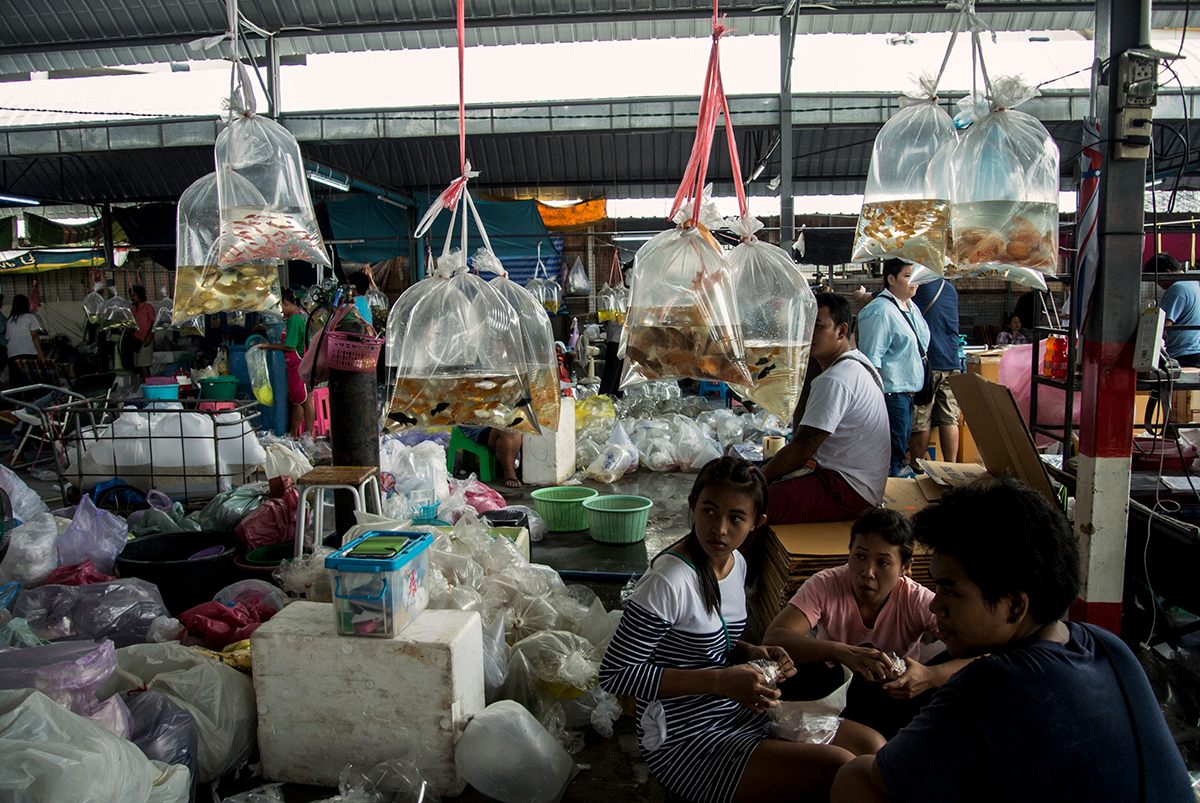
In recent years, Thailand has emerged as a center for fish breeding on a commercial scale to supply both a thriving domestic market and huge international demand; aquarium fish consistently rank as one of the nation’s top exports by dollar value.
Chatuchack’s fish market primarily caters to Bangkok’s huge number of aquarium owners—many of whom are wealthy and willing to spend exorbitant sums on their prized aquatic pets. Much of the market is dedicated to pricey, status-symbol fish like the arowana, or dragon fish, which can cost upwards of $20,000 for a quality specimen. Other rarities like freshwater stingrays—some the size of pizzas—and rare catfish species are prominently on display.

Near one of the side entrances to the market, a pair of two-foot-long “platinum” gar (a rare all-white variant of a large, predatory fish originally from North America) cruise menacingly through an enormous aquarium. Doing a quick mental conversion from Baht to U.S. dollars, the asking price for these giants was roughly $10,000 each.
Despite being much, much smaller than the neighboring complex, the fish market sprawls across a surprisingly large area, extending into narrow alleyways and dead-end corridors. Unlike any aquarium shop you’d likely see in the U.S., fish here are densely packed in small aquariums as they are often sold in large quantities, with tanks turning over multiple times per day.
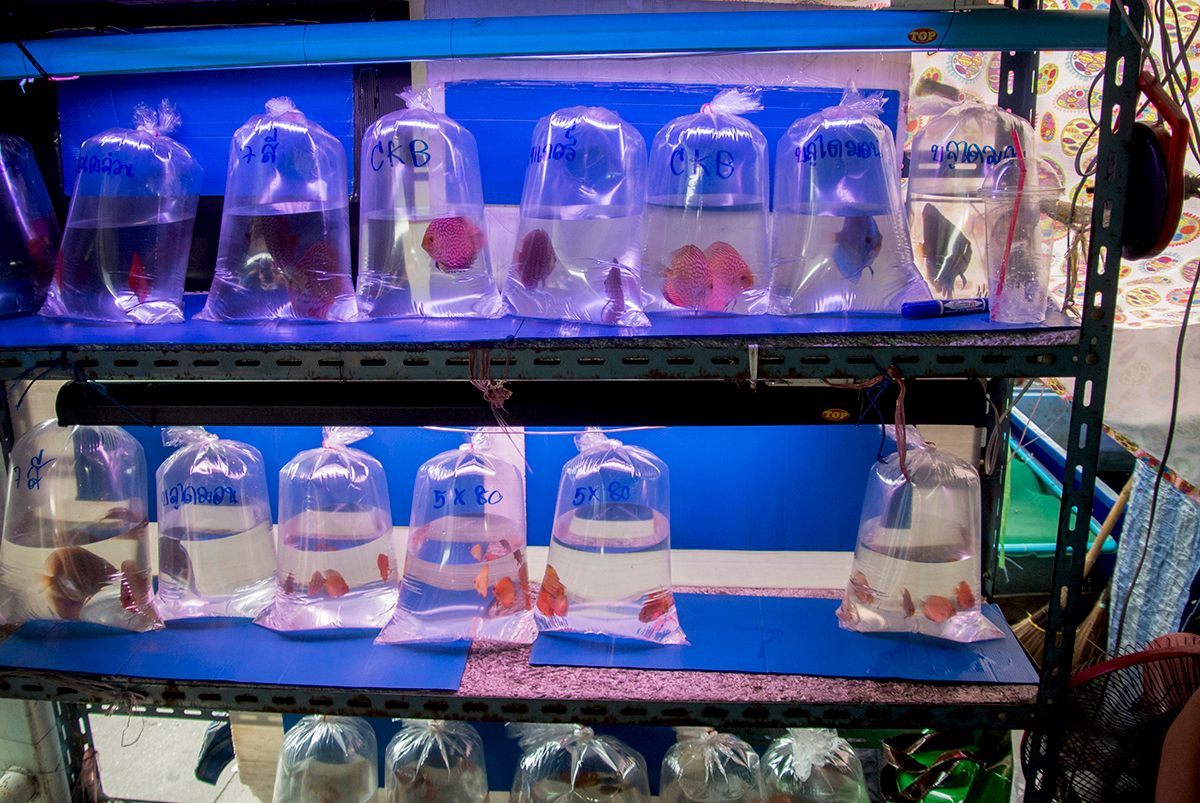
Many of the smaller shops are family breeding concerns, and barely feature aquariums at all—instead, fish are pre-bagged and ready for sale in neat rows. Each tiny shop or stall usually specializes in a particular breed or category of fish or aquarium—some showcasing colorful but delicate discus and angelfish, others displaying a bewildering array of tiny but colorful freshwater shrimps.
Perhaps owing to their long cultural affinity to fishkeeping, Thai breeders specializing in aquarium fish have an international reputation and supply millions of fish to importers and shops in the U.S. and Europe each year. Just as their counterparts in China and Japan took the common goldfish and selectively bred it into dozens of colorful variants, Thai breeders are constantly cultivating new variants of the fish they breed, selecting out traits for color, body shape, or fin configuration.
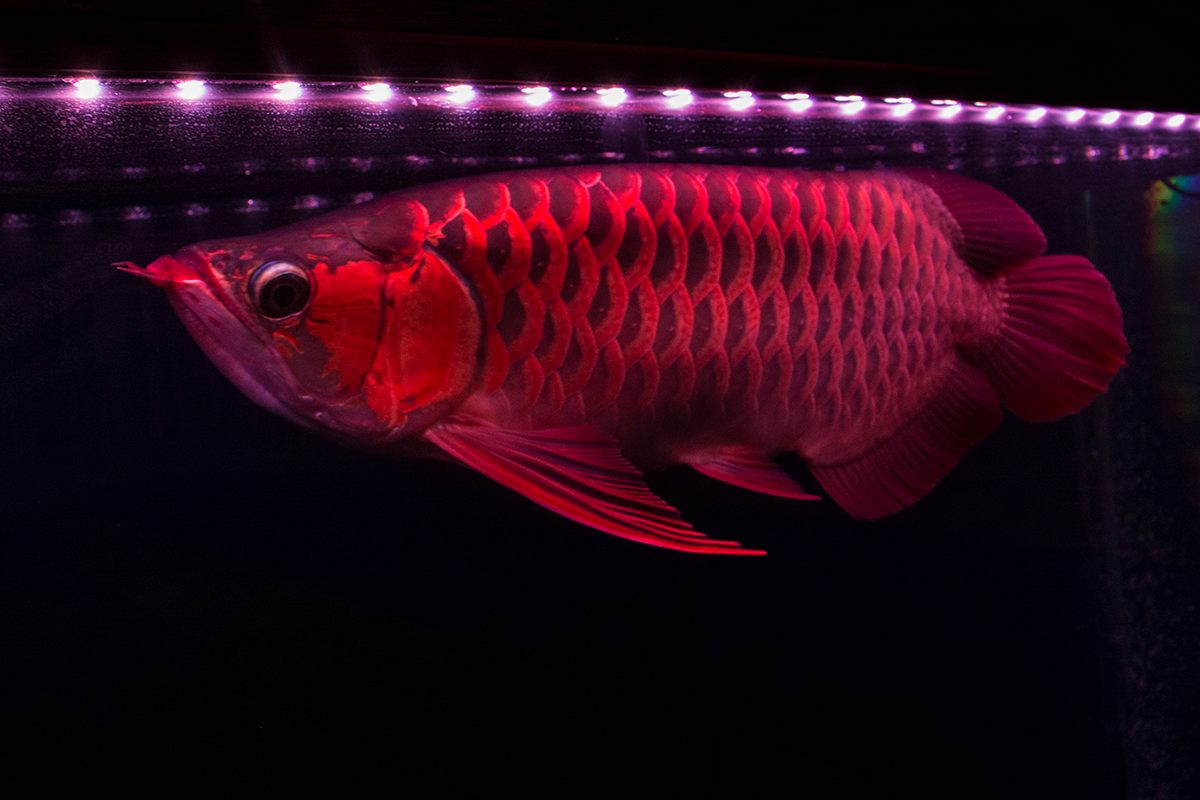
The Betta is a perfect example of this—having originated with a mostly brown, unremarkable fish, there are now hundreds of varieties in shades of blue, red, pearl white, most sporting elegant flowing fins. For the local market, albinos, platinum, or bright red mutations are in high demand, selling for hundreds or occasionally thousands of dollars.
One particularly popular fish in the Thai market is the Flowerhorn, a man made hybrid fish which sports a remarkable hump on its head, vibrant colors, and a feisty attitude (these fish do not play well with others). Flowerhorns considered to have good markings and shape are thought to be a symbol of prosperity—a living good luck charm—and are often prominently displayed in local businesses.
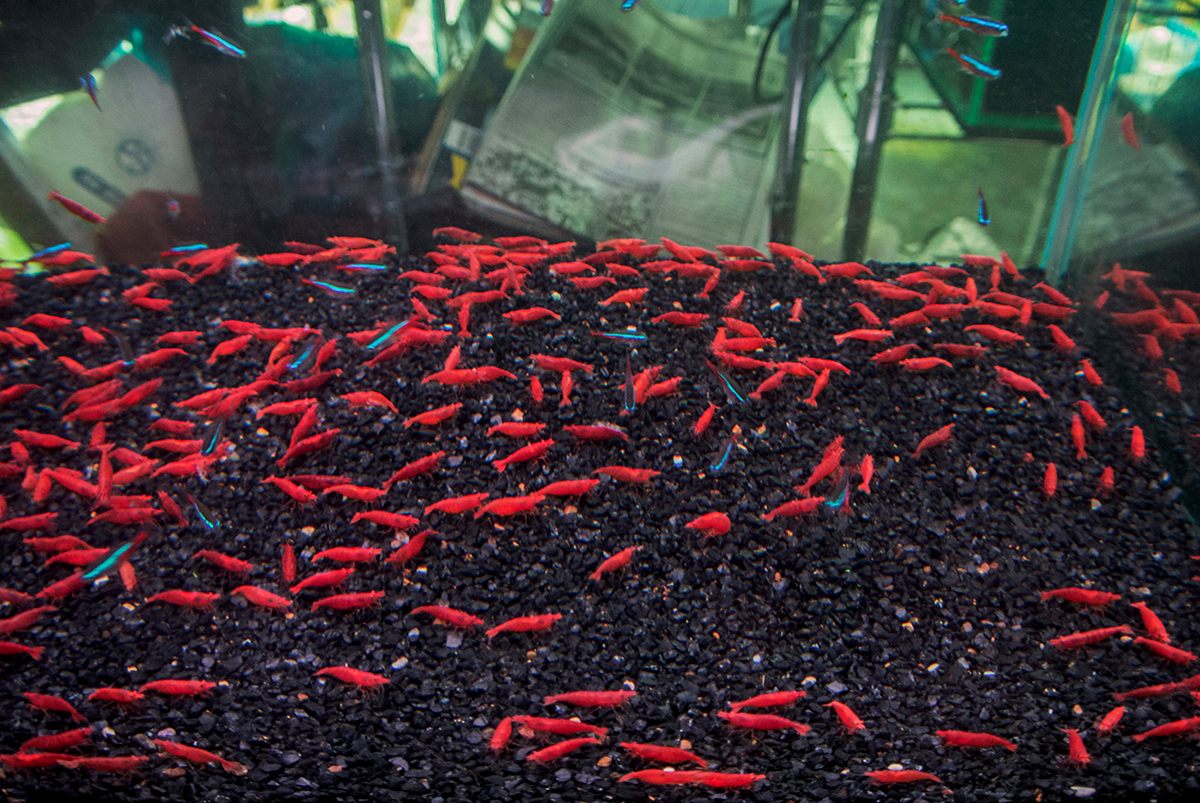
The fish market, while open to the public most of the week, is most active in the mornings, with most stalls shuttered by the early afternoon. Like Chatuchak itself, activity peaks on the weekends, when the aquarium market can get extremely crowded with local shoppers.
Each Thursday morning, the market turns over into a wholesale market, when breeders, farmers, and fish collectors from the outlying suburbs of Bangkok converge on the market to sell their fish to wholesalers and exporters in huge quantities.
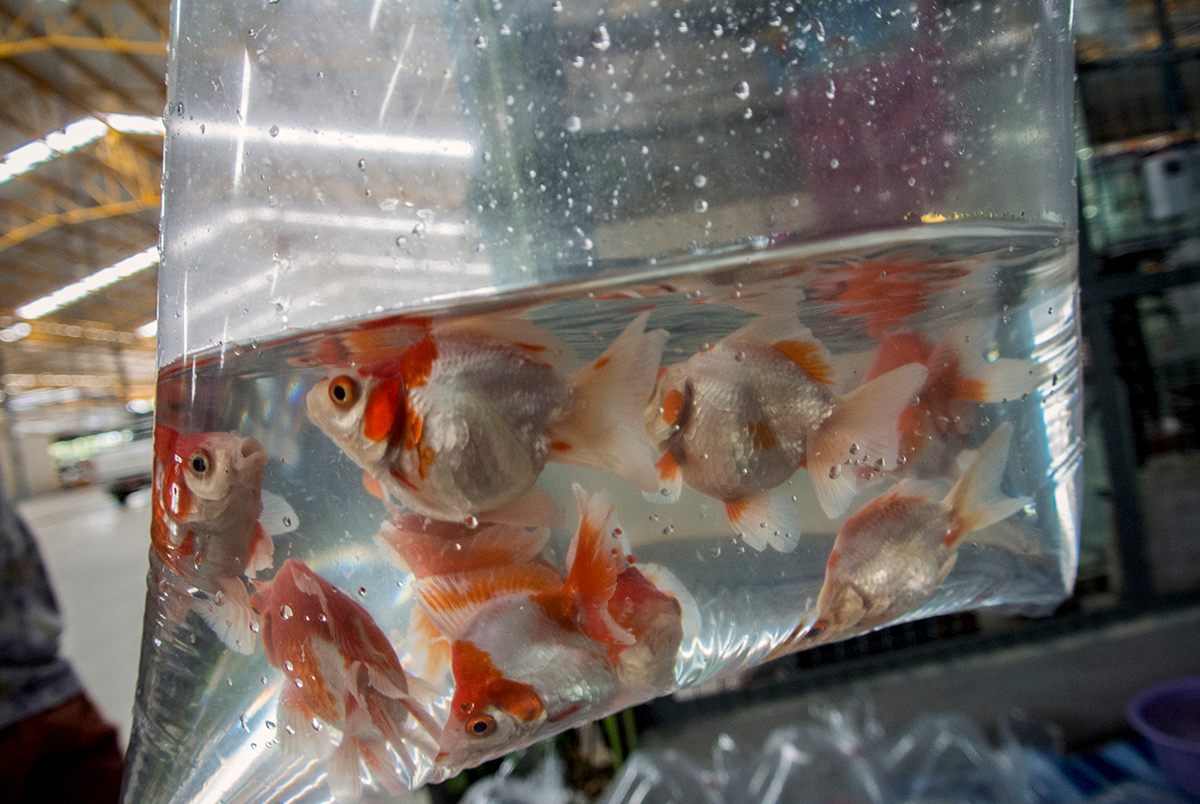
At those times, every open space in the market is carpeted in fish laid out in plastic bags—thousands of guppies, goldfish, cichlids, all ready to be bought up and shipped to a wholesale facility nearby.
This high-energy scene, with its frenzy of activity and breathless negotiations between buyer and seller, seems more akin to Wall Street trading than the normally subdued fish market, but visitors be warned—it is generally not open to the public and foreigners with cameras are looked at with suspicion.
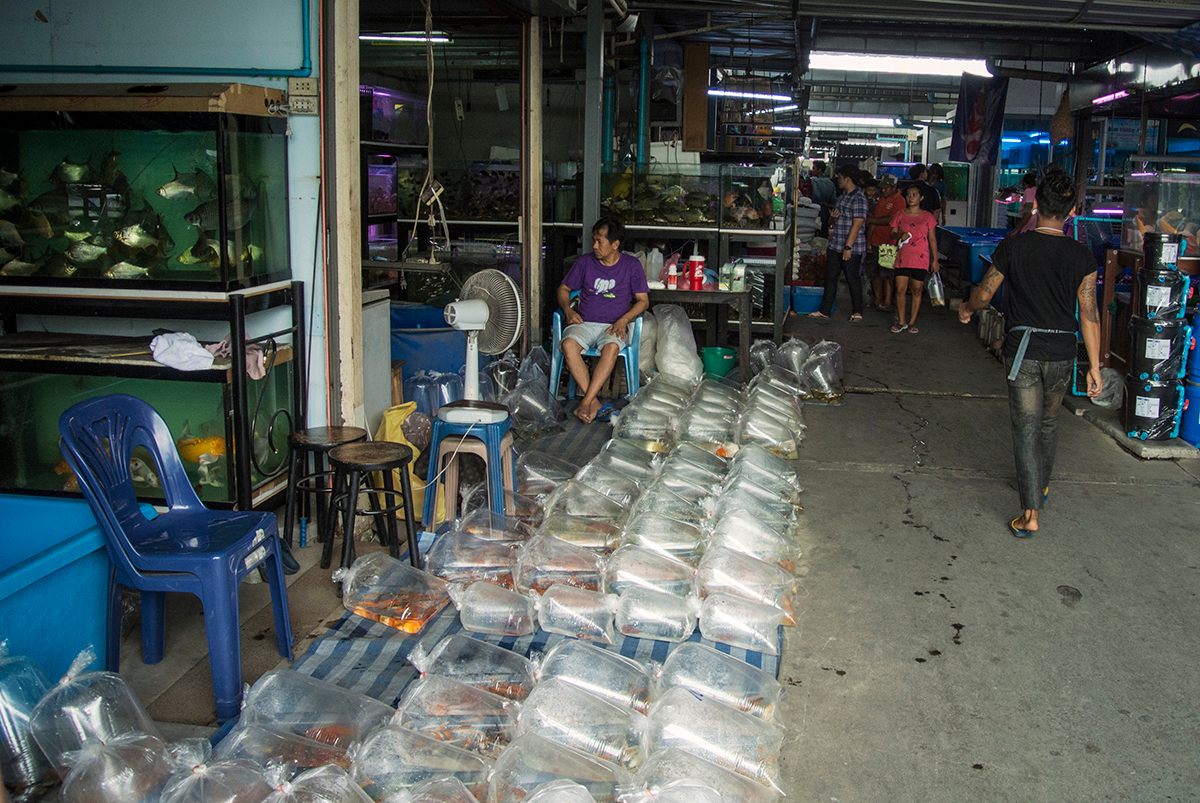
Even for someone not particularly well acquainted with the hundreds of varieties of rare fish on display, Chatuchak’s aquarium fish market is a fascinating destination for anyone looking for a brief escape from the endless, monotonous shops in the market’s more well-known counterpart.
Although the fish market clearly caters to locals and little English is spoken, most shop owners are polite and happy to show off their specialty fish to a curious visitor. It also offers a rare glimpse of a little-known hobby and industry that is a way of life for thousands of Thais.

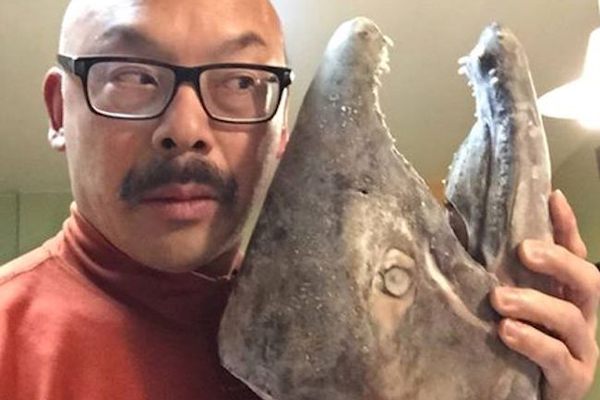







Follow us on Twitter to get the latest on the world's hidden wonders.
Like us on Facebook to get the latest on the world's hidden wonders.
Follow us on Twitter Like us on Facebook